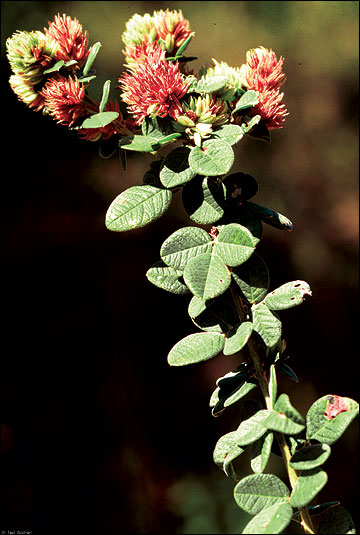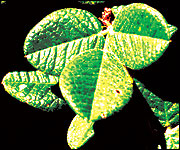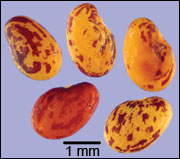Hairy lespedeza
- Lespedeza hirta
- Hairy bush clover
Forb
 Leaves are composed of three leaflets, which are nearly round. Note that flowers are usually yellowish white, instead of pink as seen here.
Leaves are composed of three leaflets, which are nearly round. Note that flowers are usually yellowish white, instead of pink as seen here.
©Ted Bodner, USDA-NRCS Plants Database
Description
Lespedezas are a diverse and ecologically important genus. These nitrogen-fixing plants improve soil fertility and provide a food source for many species of wildlife. Hairy lespedeza is found throughout the southern Midwest on rocky, acidic soils commonly associated with glades and savannas. As with most legumes, hairy lespedeza's leaflets occur in threes. Hairy lespedeza earns its name from its stem and oblong leaflets, both of which are covered with hairs. Hairy lespedeza is a perennial.
Bloom period
July to October
Use by bobwhites
Bobwhites readily eat the seeds of this plant. Its structure and status as a legume make hairy lespedeza valuable for brood rearing cover as well.




